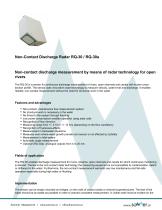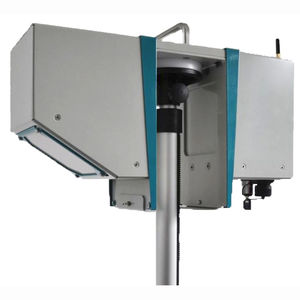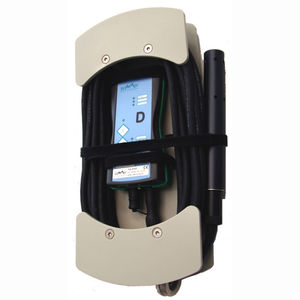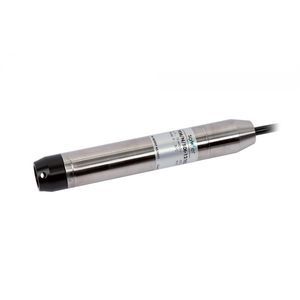
- Detection - Measurement
- Flow, Pressure and Level Measurements
- Radar flow meter
- SOMMER Messtechnik GmbH
Non-contact flow meter RQ-30radarfor water4-20 mA









Add to favorites
Compare this product
Characteristics
- Technology
- radar
- Fluid
- for water
- Communication
- 4-20 mA, RS485, analog output
- Protection level
- IP67
- Applications
- for high flow rates, for harsh environments, for environmental analysis
- Other characteristics
- digital, open-channel, non-contact, maintenance-free
- Process temperature
Min.: -35 °C
(-31 °F)Max.: 60 °C
(140 °F)- Precision
1 %
- Repeatibility
0.1 %
Description
The RQ-30 is a sensor for continuous discharge measurement of rivers, open channels and canals with known cross-section profile. The sensor uses innovative radar technology to measure velocity, water level and discharge. It enables reliable, non-contact measurement without the need for structural work in the water.
Features and advantages
- Non-contact, maintenance free measurement system
- No structural work is necessary in the water
- No threat to the system through flooding
- Low power consumption enables operation using solar cells
- Recognition of flow direction
- Measuring range from +/- 0.10 to +/- 15 m/s (depending on the flow conditions)
- Recognition of hysteresis-effects
- Measurement in backwater situations
- Measures even where weed growth prevails and sensor is not affected by turbidity
- Measurement in tidal waters
- Automatic angle measurement
- Optional (RQ-30a): analogue outputs from 4 to 20 mA
FIELDS OF APPLICATION
The RQ-30 enables discharge measuerment for rivers, streams, open channels and canals for which continuous monitoring is desired. Thanks to the non-contact radar technology the measuring equipment is not susceptible to contamination, debris or driftwood in the water. Furthermore, the non-contact measurement warrants very low maintenance and fail-safe operation especially during high water or flooding.
IMPLEMENTATION
The sensor can be simply mounted on bridges, on the roofs of closed canals or channel superstructures. The bed of the water should be as stable as possible in order to warrant consistent measurement. A visible swell must be evident on the surface of the water.
Catalogs
Related Searches
- Flowmeter
- Liquid flowmeter
- Level probe
- Liquid level probe
- Stainless steel flowmeter
- Waterproof flowmeter
- Pressure probe
- Industrial flowmeter
- Analog level probe
- Precision flowmeter
- Compact flowmeter
- Water flowmeter
- Digital output level sensor
- Digital flowmeter
- RS485 flowmeter
- Ultrasonic flowmeter
- Analog pressure probe
- Relative pressure probe
- High-accuracy flowmeter
- Modbus flowmeter
*Prices are pre-tax. They exclude delivery charges and customs duties and do not include additional charges for installation or activation options. Prices are indicative only and may vary by country, with changes to the cost of raw materials and exchange rates.















